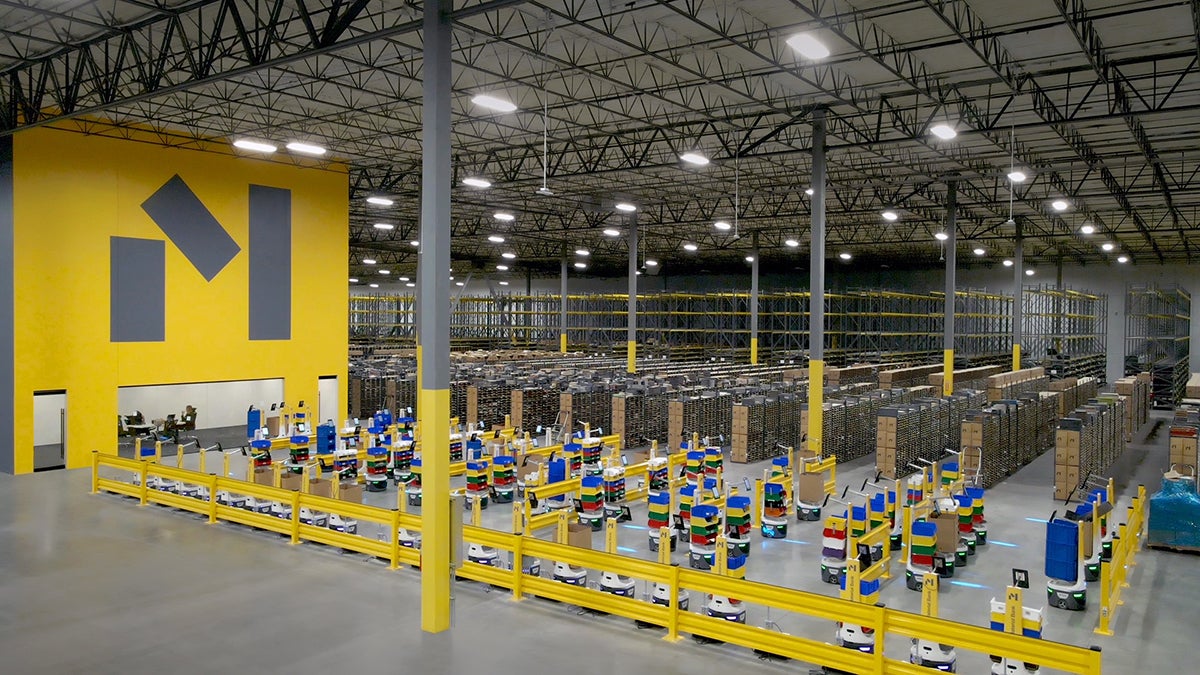After raising a gobsmacking $175 million last year, Material Bank founder and CEO Adam Sandow laid out a sizable punch list of initiatives for putting the money to good use—including expansion into Europe and Japan. Eight months later, those plans are coming to fruition. According to head of Material Bank Europe Philippe Brocart, the sampling platform will go live there in April. The Japanese operation, Sandow tells Business of Home, is currently in beta testing and will be fully operational on a similar timeline.
Given the existing ties between the European and American design industries, Europe was a natural first target for expansion. Brocart, the former head of design fair Maison&Objet, is no stranger to rounding up European design brands toward a common purpose, and he’s been busy over the past year signing up 50 companies to launch Material Bank’s European edition. Debutantes include Wall&decò, Mermet, Unilin, Oberflex, Serge Ferrari, Durasein and Cupa Pizarras.
“It’s very difficult in Europe for brands to target architects and designers in other countries. You can be strong in France [or] in the U.K., but in Italy, Austria or Belgium—that’s difficult,” Brocart tells BOH. “So offering these brands a platform where we can deliver in every country is really value-added.”
Based out of a hub near Paris Charles de Gaulle airport, the operation will serve all of Europe, including the U.K. and Scandinavian countries. The challenge of shipping samples across international borders and through customs means a slight tweak to Material Bank’s central promise: The company will still guarantee next-day samples across Europe, but the cutoff time to place an order will be slightly earlier (7:30 p.m. instead of midnight). FedEx will handle the shipping and logistics, as it does for Material Bank in America.
The Japanese operation is farther afield, both culturally and geographically. Sandow says Material Bank is expanding there partially due to the connection between the company and one of its biggest investors, Japanese conglomerate SoftBank. Infrastructure in Japan, adds Sandow, can also serve as a base of operations to expand into other Asian markets down the line.
Helmed by former SoftBank exec Go Nakazawa, Material Bank Japan is not radically different from its other operations. Headquartered near Tokyo, the platform will overnight samples throughout the country. At launch, it will have almost 100 participating brands.
Material Bank has small differences in the way that it approaches its international markets. For example, in Europe there are no gargantuan design firms like Perkins&Will or Gensler—the landscape is mostly composed of small and midsize players, which often do both commercial and residential work. That fact, says Brocart, will likely push Material Bank Europe to court more residential-oriented brands.
However, both Brocart and Sandow say the platform’s key selling points—and pain points—are the same across all markets, international and domestic. In a nutshell, Material Bank creates a seductively easy material selection experience for designers, and companies who sell materials want to get in on that. The catch: It’s quite expensive for brands, which pay both a flat monthly fee to be listed, as well as a fee every time one of their materials is placed in a box and shipped to a designer. (The company does not disclose the per-shipment cost, but anecdotal evidence suggests it’s in the realm of $25; Brocart says pricing in Europe is in the ballpark of American pricing.) Those basic parameters don’t change much whether you’re in Topeka or Tokyo.
For Material Bank itself, the international expansion is almost pure upside. Though the American operation is a large company, the European branch will launch with a staff of 20 to 30 people, and its team in Japan is only slightly bigger. Much of the complexity of the organization comes from running the IT, accounting and back-end systems. “With all the hard work and centralized tech work being done here [in the U.S.], it allows us to open up in new markets with smaller teams, because we have it down to a science,” says Sandow.
Expanding without spending a bundle of cash is obviously advantageous. However, in some ways one of the most lucrative opportunities for the platform is to cross-sell its brands across multiple markets. If Brand X is happy on the American version of Material Bank and is curious to explore Europe—well, that’s easy, and why not Asia, too? These expansions underscore the degree to which, if successful, Material Bank is positioning itself to act as the rails upon which the global design industry runs.
“We really believe there’s going to be tremendous cross-pollination across all of the Material Bank markets,” says Sandow. “The platform gives brands a big opportunity to expand into new markets without even having to open up an office there.”
Of course, much is to be done before that comes to pass, and 2023 promises to be a very busy year for Sandow. In addition to Europe and Japan, Material Bank is rolling out another version of its software with new tools and finalizing its residential-facing platform. Sandow hinted that further acquisitions may be coming soon as well. For all those reasons, the platform’s next big global move might not come immediately. “For the next two years, we’re focusing on Europe and Japan. There are opportunities to expand more in Asia, but we have so much going on right now,” says Sandow, adding with a laugh: “If we try to do any more, my team might revolt.”
Homepage image: Material Bank’s American facility | Courtesy of Material Bank





























